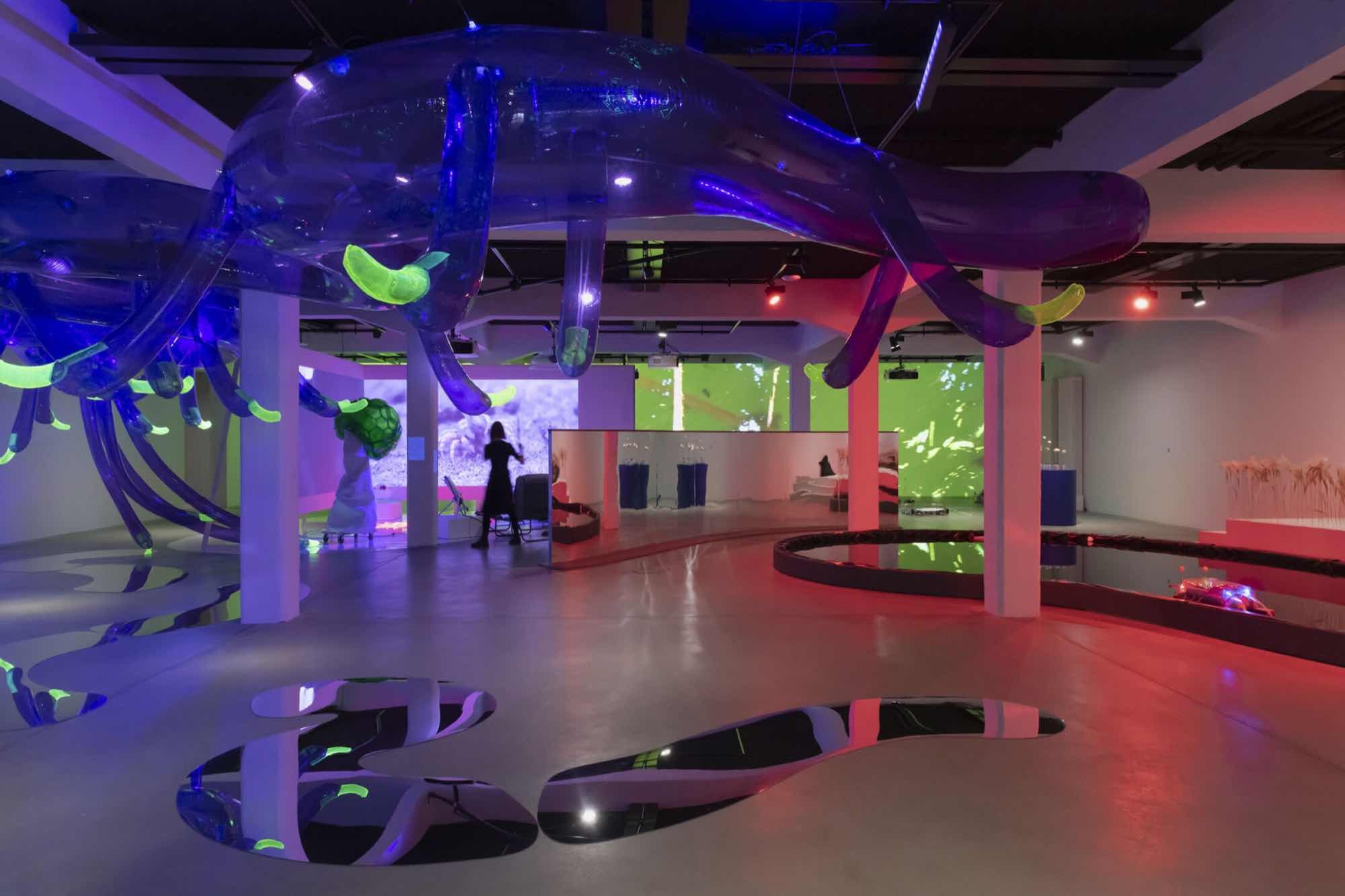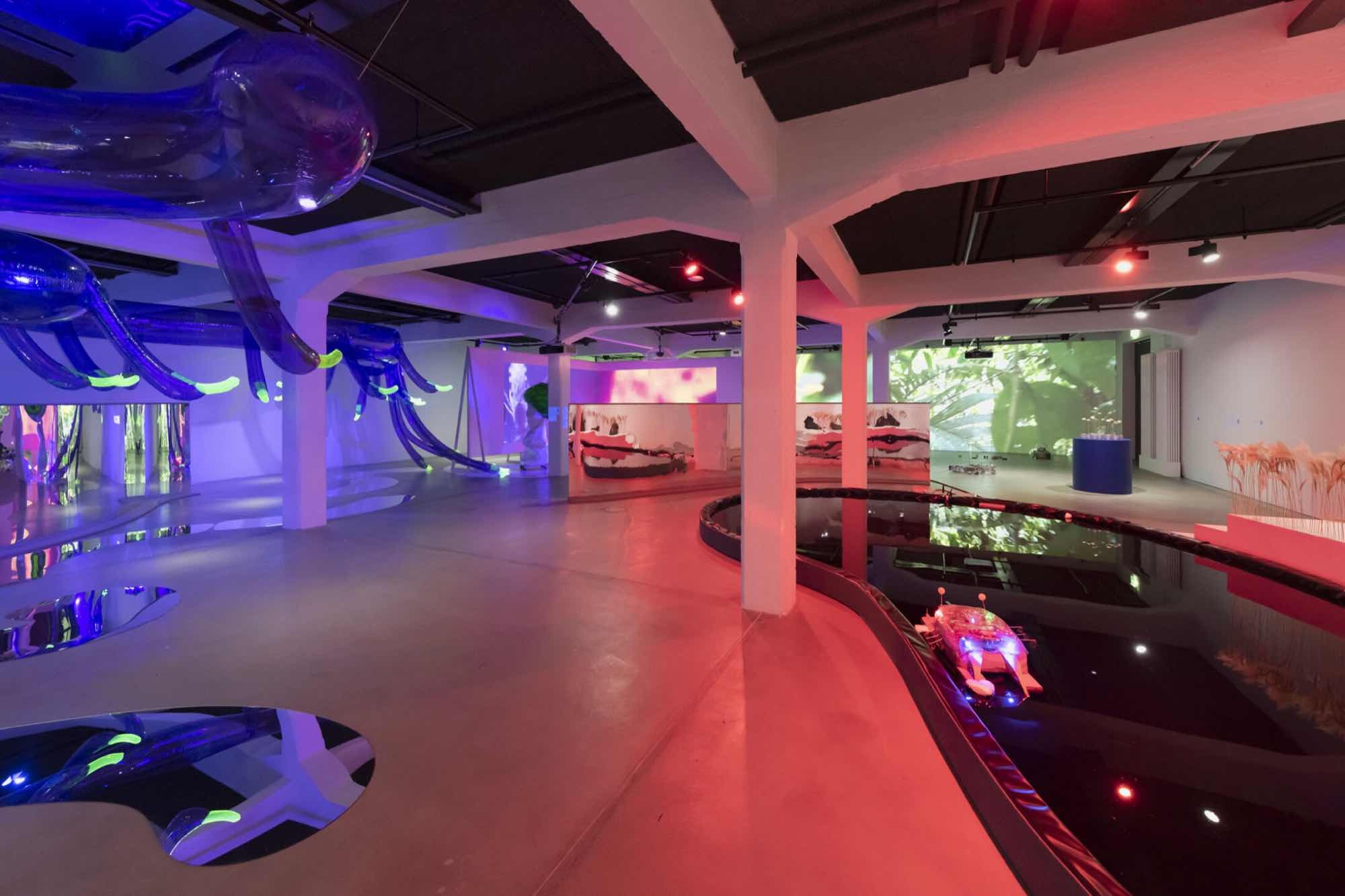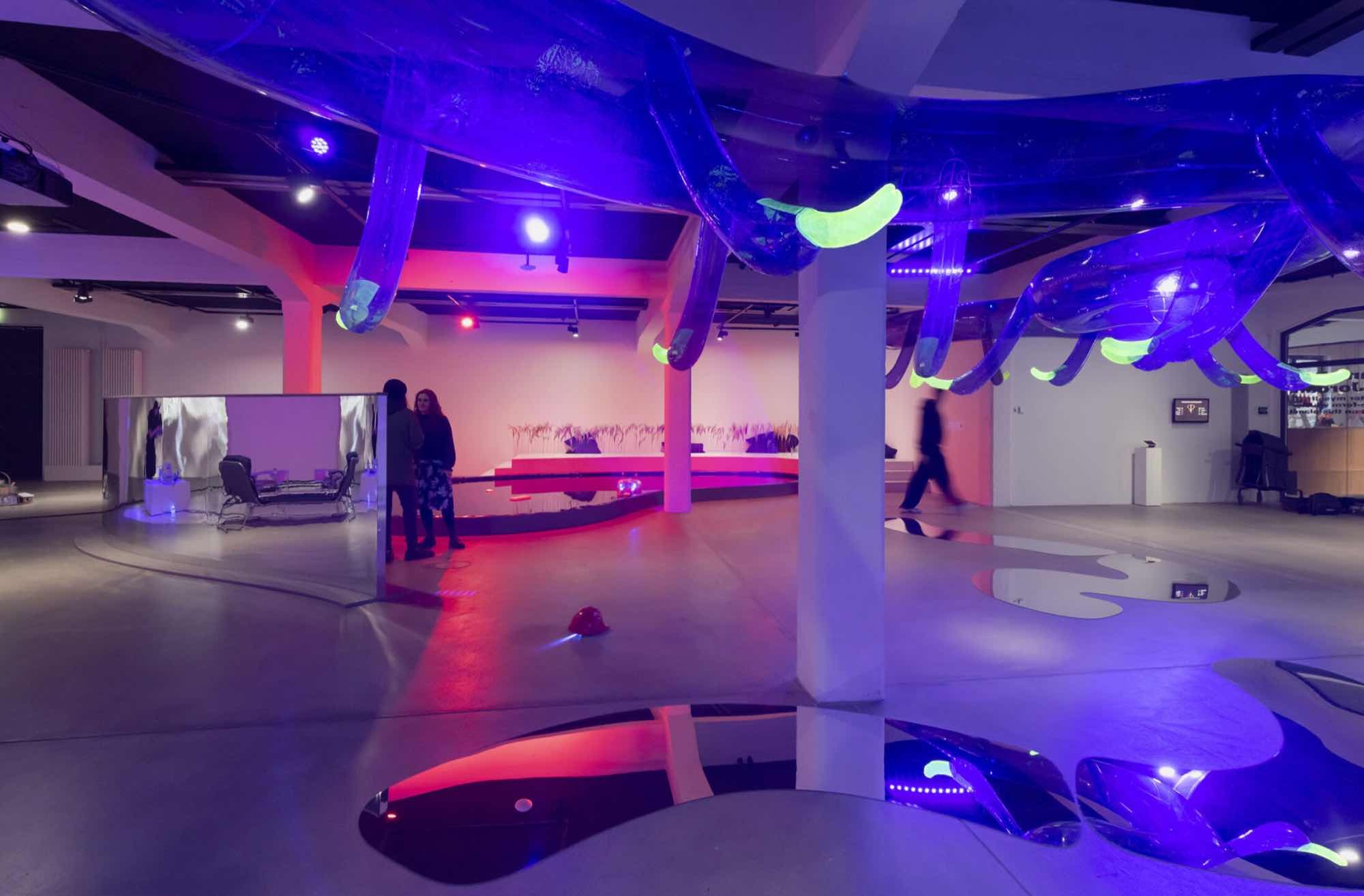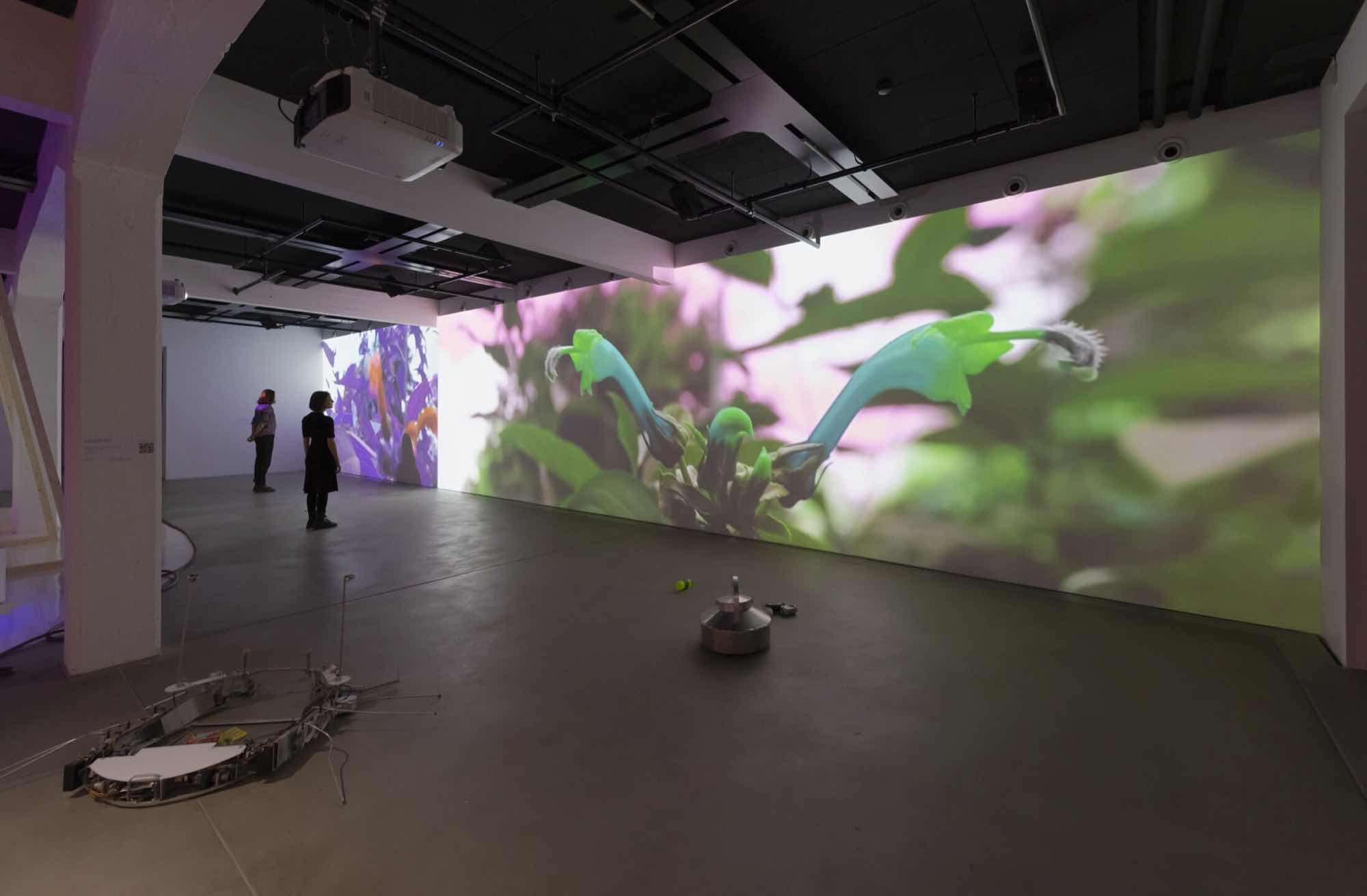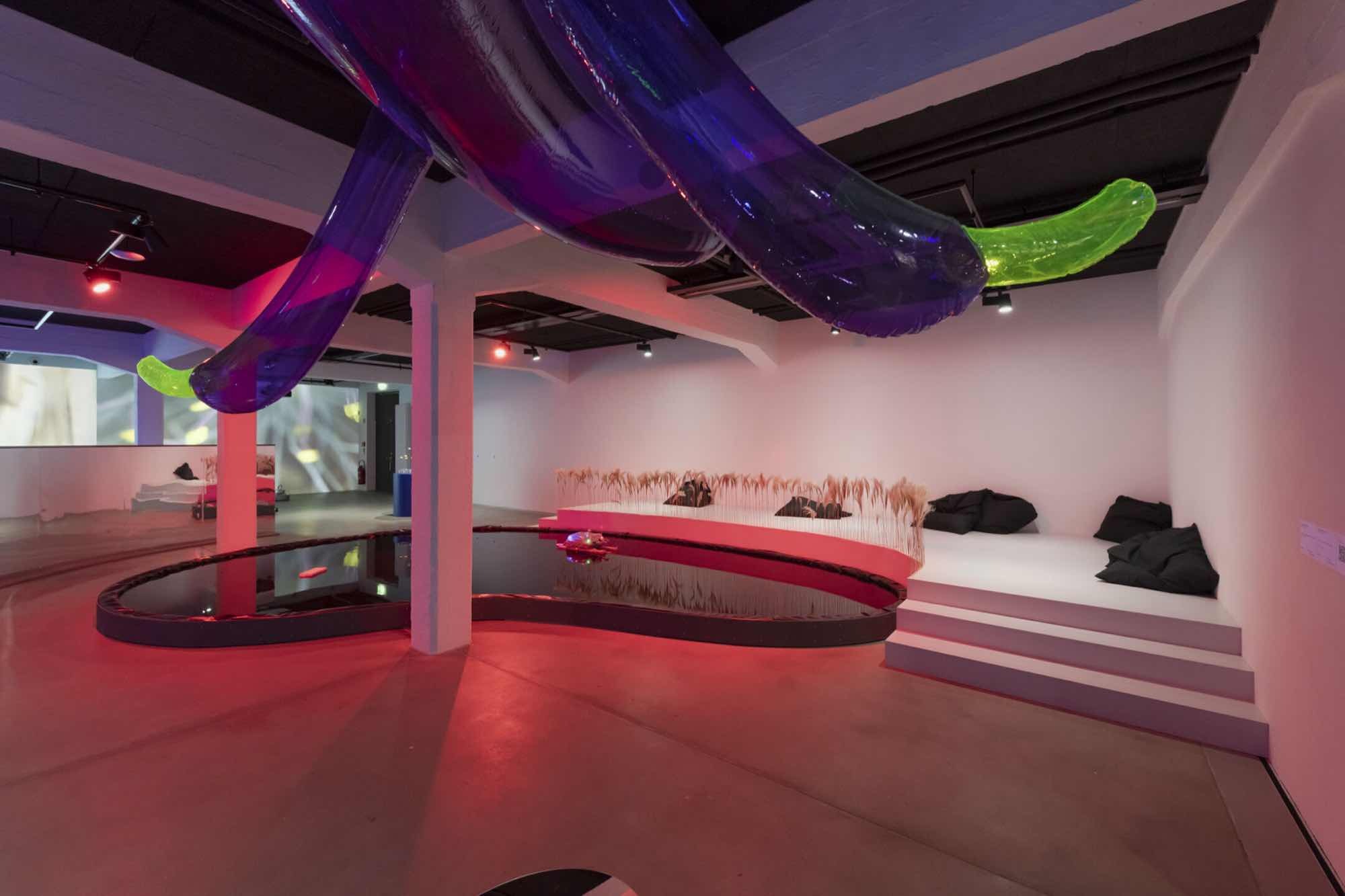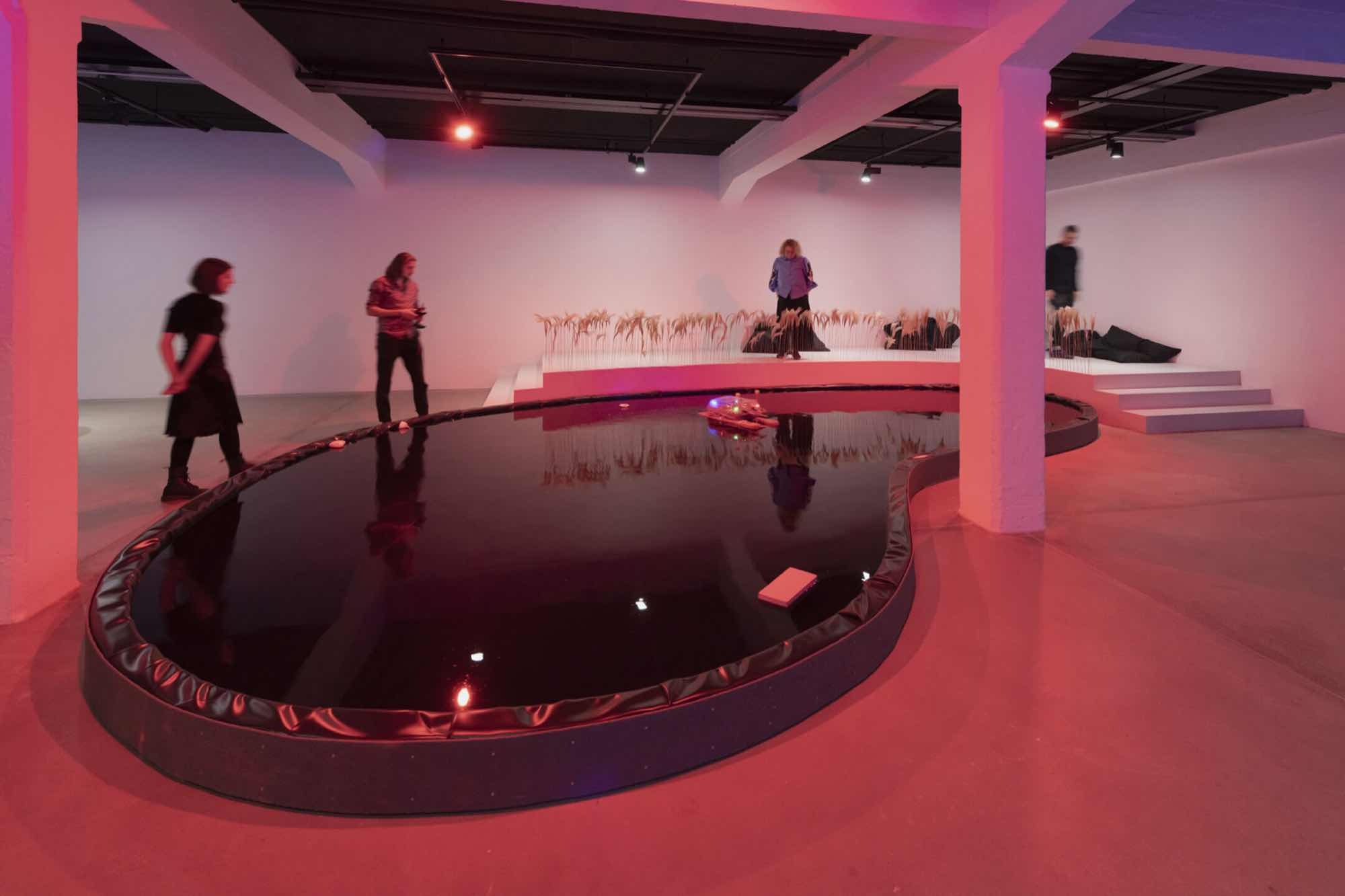Anne Duk Hee Jordan
I must alter myself into a life-form which can exist on this planet
19 Jan - 19 Mar 2023

Anne Duk Hee Jordan, Atmospheres of Breathing, 2020 Multi-Media, Installation at HEK (House of Electronic Arts), 2022
Photo: Franz Wamhof
Photo: Franz Wamhof
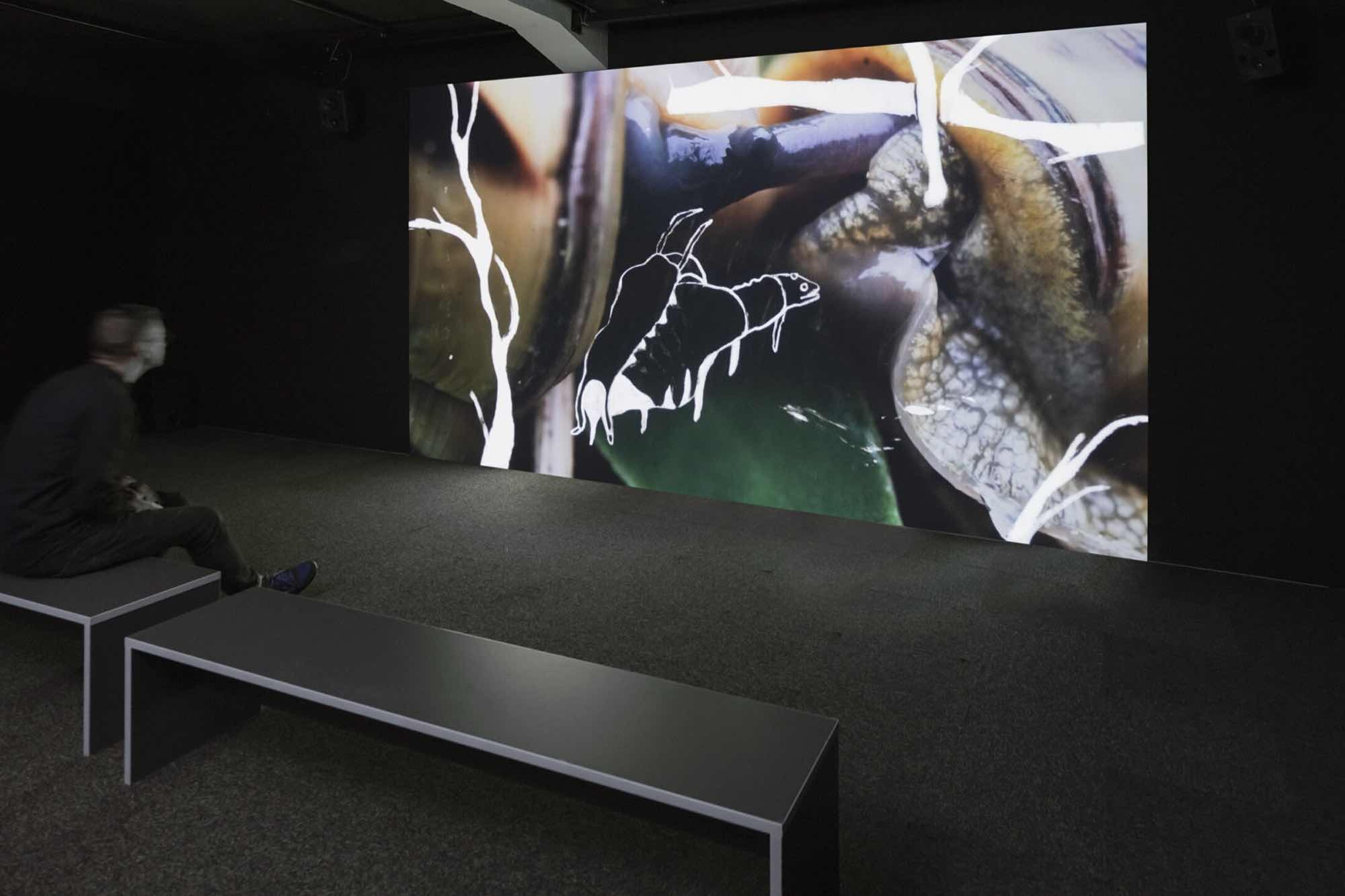
Anne Duk Hee Jordan, Brakfesten La Grande Bouffe 2022 Video, HEK (House of Electronic Arts), 2022
Photo: Franz Wamhof
Photo: Franz Wamhof
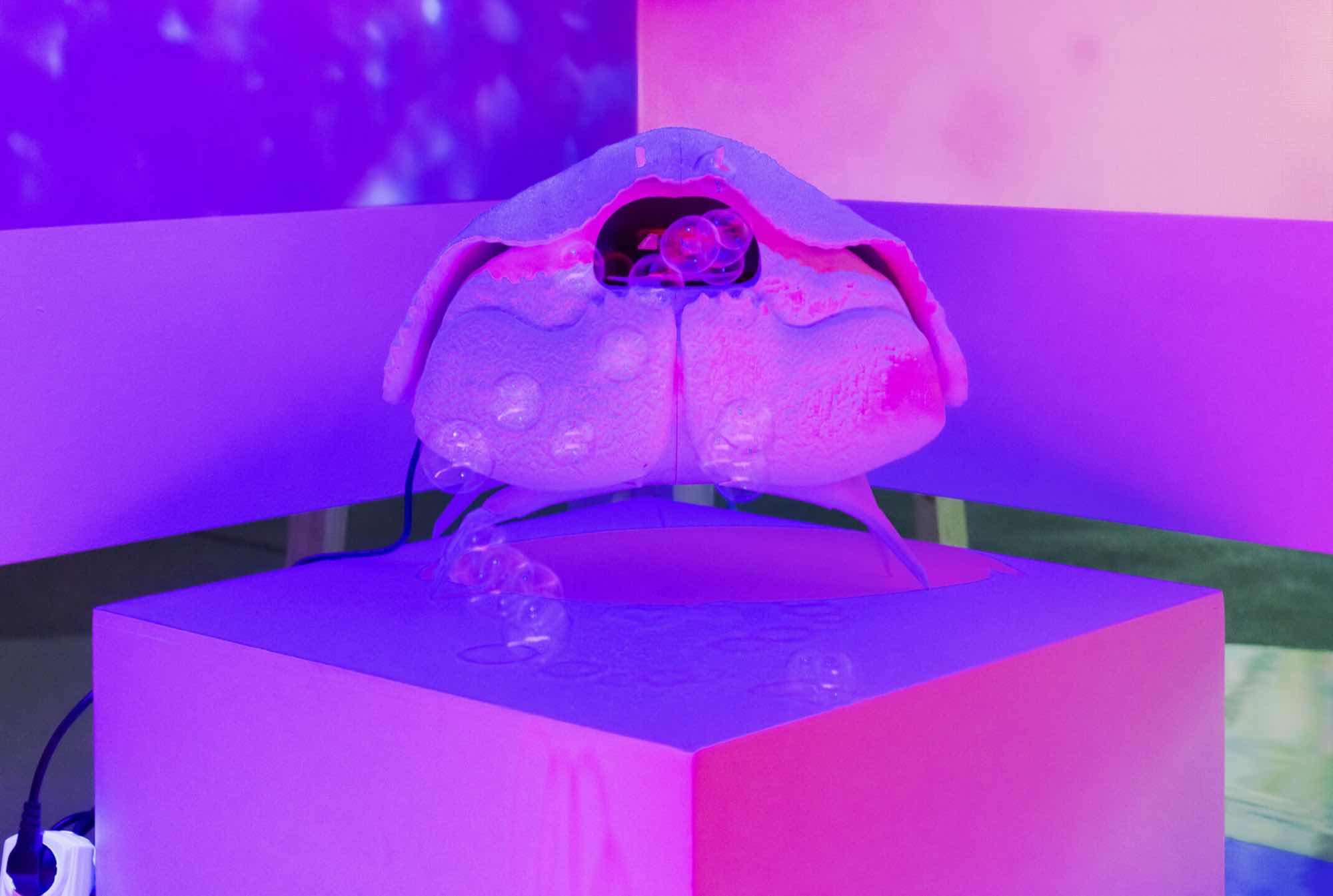
Anne Duk Hee Jordan, I Am So Ashamed, 2020, Kinetic Sculpture, HEK (House of Electronic Arts), 2022
Photo: Franz Wamhof
Photo: Franz Wamhof
With I must alter myself into a life-form which can exist on this planet, we present the first solo exhibition of the German-Korean artist Anne Duk Hee Jordan in a Swiss museum. In her installations, the artist creates experimental and futuristic scenes in which she questions the conventional attributes of nature, culture and technology. In her imaginative and immersive installations, Jordan addresses ecological and socio-political issues in equal measure, creating enthralling arrangements of intertwined environments in which she makes visible the small things that are usually hidden from perception. She translates the complex ecological problems of our time into visually experienceable, pleasurable worlds and does so with a tongue-in-cheek humour that makes new perspectives and approaches to solutions possible. Her works refer to the theories of a post-anthropocene in which humans are no longer the centre of attention but part of networked ecosystems. In this sense, Jordan's works are both inspiring and evocative.
With her cautionary exhibition title "I must alter myself into a life-form which can exist on this planet", Anne Duk Hee Jordan refers to the imperative of our time: to harmonise with the environment and nature to avoid endangering our planet even further. To this end, she creates experimental and futuristic scenarios, working with sculptural, biological and kinetic elements to address a changing environment in which humans and non-human beings can evolve together. Her worlds have something sensual and playful about them and open up a new view of our environment, propagating new models of community between all living beings. Jordan sensitises us to a "togetherness with our environment" in the spirit of the theories proposed by Donna Haraway, philosopher of science and cyborg pioneer, regarding the kinship of species. "Making Kin", a term that finds expression in many of Jordan's works, is a maxim coined by Haraway that calls for symbiosis between species.
In her artistic practice, Jordan often combines existing works into new constellations that, in the context of an exhibition, create a form of Gesamtkunstwerk that addresses her inquiry into the ecological in new and inspiring ways. Transience and transformation emerge again and again as questions and themes. For instance, biological processes of decay and transformation are made vivid in time-lapse. Her works are compelling due to their unique aesthetic, which is nourished by a combination of documentary motifs and artistic imagination. Jordan directs our gaze to the details, allowing us to experience the world from both a micro and macro perspective in her works.
The exhibition presents core work ensembles. In 2016, Jordan began developing a series of robots under the title Artificial Stupidity, motorised creatures that populate her installations. We encounter the robotic creatures as cheerful machines whose functionality is not geared towards efficiency. The Robotic Waste Crab, for example, tirelessly scours the exhibition space for waste. Even if its efforts are not very successful, it stands as a prototype for an idea and an appeal to make the world a better place. The Water Crab, on the other hand, populates the pool in the exhibition and can be controlled by the visitors. A robotised teapot also belongs to the cast of absurd and surrealistic figures in Jordan's universe. This Teapot contributes to a soundscape that begins as a gentle breeze and escalates to the harsh clatter of a storm, symbolising the changing climate of our planet.
Central to the space is the work "Atmospheres of Breathing", a complex installation that deals with the meaning of breath as a life-giving mechanism that connects us all. In this multi-layered kinetic installation, Jordan explores the question of how the vital function of breathing can be experienced both visually and haptically. This installation presents itself as a complex system in which a multitude of life forms and animated beings appear. It consists of a breathing apparatus with six blue balloons
that rhythmically fill with air. This apparatus is connected to two reclining chairs on which we can take a seat to enter a meditative state of relaxation and serenity with the breathing environment. The sounds of the mechanical breathing machine mix with the sounds of a robotic "Singing Saw" and the minimalist composition of the video "Staying with the Trouble"1 , which uses extreme close-ups to immerse us in an ecosystem of monarch butterfly cocoons, amphibians, bacteria and fungi and allow
us to experience a fascinating world of other species. The breathing apparatus itself is titled "Don't Panic", referring to the 4-7-8 breathing technique based on the traditional yoga practice pranayama, which facilitates the conscious control of breathing. This technique is also used to cope with stressful situations. Another element of the installation is the kinetic sculpture "I Am So Ashamed", a 3Dprinted crab exhaling soap bubbles. "Shame-faced" goes back to the anthropomorphising paraphrase of her mannerisms when the scissors are brought together as if to hide the face. A framing backdrop for the entire exhibition is the 3-channel video projection "On Earth We Are Fabulous Only Briefly". In it we experience the wondrous world of nature, observe nocturnal animals, immerse ourselves in the paradisiacal cosmos of primeval forests with their abundance of birds, insects, reptiles and plants. The work offers a detailed micro- and macroscopic view of the world and celebrates the beauty of all things and the life and abundance of nature. However, the title also refers to the transience of all life and so the work ends with a view of a volcanic lava landscape - the symbol of a world in which nothing thrives or is in the process of being created again.
Curator: Sabine Himmelsbach
With her cautionary exhibition title "I must alter myself into a life-form which can exist on this planet", Anne Duk Hee Jordan refers to the imperative of our time: to harmonise with the environment and nature to avoid endangering our planet even further. To this end, she creates experimental and futuristic scenarios, working with sculptural, biological and kinetic elements to address a changing environment in which humans and non-human beings can evolve together. Her worlds have something sensual and playful about them and open up a new view of our environment, propagating new models of community between all living beings. Jordan sensitises us to a "togetherness with our environment" in the spirit of the theories proposed by Donna Haraway, philosopher of science and cyborg pioneer, regarding the kinship of species. "Making Kin", a term that finds expression in many of Jordan's works, is a maxim coined by Haraway that calls for symbiosis between species.
In her artistic practice, Jordan often combines existing works into new constellations that, in the context of an exhibition, create a form of Gesamtkunstwerk that addresses her inquiry into the ecological in new and inspiring ways. Transience and transformation emerge again and again as questions and themes. For instance, biological processes of decay and transformation are made vivid in time-lapse. Her works are compelling due to their unique aesthetic, which is nourished by a combination of documentary motifs and artistic imagination. Jordan directs our gaze to the details, allowing us to experience the world from both a micro and macro perspective in her works.
The exhibition presents core work ensembles. In 2016, Jordan began developing a series of robots under the title Artificial Stupidity, motorised creatures that populate her installations. We encounter the robotic creatures as cheerful machines whose functionality is not geared towards efficiency. The Robotic Waste Crab, for example, tirelessly scours the exhibition space for waste. Even if its efforts are not very successful, it stands as a prototype for an idea and an appeal to make the world a better place. The Water Crab, on the other hand, populates the pool in the exhibition and can be controlled by the visitors. A robotised teapot also belongs to the cast of absurd and surrealistic figures in Jordan's universe. This Teapot contributes to a soundscape that begins as a gentle breeze and escalates to the harsh clatter of a storm, symbolising the changing climate of our planet.
Central to the space is the work "Atmospheres of Breathing", a complex installation that deals with the meaning of breath as a life-giving mechanism that connects us all. In this multi-layered kinetic installation, Jordan explores the question of how the vital function of breathing can be experienced both visually and haptically. This installation presents itself as a complex system in which a multitude of life forms and animated beings appear. It consists of a breathing apparatus with six blue balloons
that rhythmically fill with air. This apparatus is connected to two reclining chairs on which we can take a seat to enter a meditative state of relaxation and serenity with the breathing environment. The sounds of the mechanical breathing machine mix with the sounds of a robotic "Singing Saw" and the minimalist composition of the video "Staying with the Trouble"1 , which uses extreme close-ups to immerse us in an ecosystem of monarch butterfly cocoons, amphibians, bacteria and fungi and allow
us to experience a fascinating world of other species. The breathing apparatus itself is titled "Don't Panic", referring to the 4-7-8 breathing technique based on the traditional yoga practice pranayama, which facilitates the conscious control of breathing. This technique is also used to cope with stressful situations. Another element of the installation is the kinetic sculpture "I Am So Ashamed", a 3Dprinted crab exhaling soap bubbles. "Shame-faced" goes back to the anthropomorphising paraphrase of her mannerisms when the scissors are brought together as if to hide the face. A framing backdrop for the entire exhibition is the 3-channel video projection "On Earth We Are Fabulous Only Briefly". In it we experience the wondrous world of nature, observe nocturnal animals, immerse ourselves in the paradisiacal cosmos of primeval forests with their abundance of birds, insects, reptiles and plants. The work offers a detailed micro- and macroscopic view of the world and celebrates the beauty of all things and the life and abundance of nature. However, the title also refers to the transience of all life and so the work ends with a view of a volcanic lava landscape - the symbol of a world in which nothing thrives or is in the process of being created again.
Curator: Sabine Himmelsbach

